The castle of Saint Florentine: "the castle that was never besieged, and in which they live"
Castle of Saint Florentine. Bird's eye view.
And it was so that the high-speed electric train (aka the Barcelona metro) rushed me from the small resort town of Malgrat de Mar to Barcelona. Behind the windows coastal beaches flashed to the left, and to the right were green hills and one after the other coastal towns and hotels. “Canet de Mar,” said the announcer’s voice, and right there on the hill, jagged towers flashed among the greenery. "Castle!" - I thought, and decided to go to him.
That's how the castle looked at the end of the XIX century.
The idea, of course, was to go here and go there, but when you do not rest alone and have three women in your arms, such “exertsis” belong to the realm of fantasy. On the way back, I again saw this castle, but I thought that it was some kind of new one too. “Novodel, probably!” - I decided the next day, going to him, I didn’t take a camera with me, since the weather was good and it was about to rain.
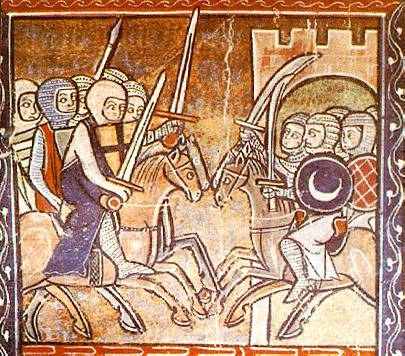
The masters of the castle differed militancy and often fought with the Moors. However, they never managed to either besiege their castle or take it by storm. That is, somehow, all the time he stayed away from the war!
He passed through the city, climbed up to the main highway, saw a dirt (!) Road turning to the castle and, passing along it, turned out to be in front of the building ... amazingly beautiful, standing right in the middle of a thick forest. And silence, as if it happens in a fairy tale. Finally, I achieved that a certain person opened the door for me, and we somehow explained. “They live here!” “Enter and write about it!”; "Not!"; "Only an excursion!"; "How many?"; "500 euro!"; "LTD! Why so expensive?"; "Live here. Free when the music! ”; “When is the music?”; “Neskoro!” - “talked” in one word!
Entrance to the castle.
I walked around the castle from all sides, again regretted that I did not take the "fotik" and went back. And then it was no longer possible to repeat this visit, and I once again remembered the saying that we should not put off until tomorrow what can be done successfully today!
Gate to the castle. They are guarded by two stone lions.
But then I made a long search for information on this castle, and here is what is interesting in all respects. history I found out about him ...
The first documentary sources tell us that even in the 11th century, the villa Domus, owned by the knights Guadamir de Canet (1024 year) and Gilbert de Canet (1041 year), stood on the site of an ancient Roman building (the last one was the major-domo of the king) Aragon Pedro IV Ceremonial. Only in the XIV century, under its owner Ferrere de Canet - the great-grandson of Gilbert - Domus turned into a castle after he received permission from the king to build two towers with gates (1335 - 1346) that would protect the house from raids by pirates, who often robbed the Mediterranean coast of Catalonia. His son, Arnaut, was able to expand his land holdings, marrying the families of Besor and Monteskey, and also built the chapel of St. Mary and the Eleven Thousand Virgins in one of the towers of his castle. According to the latest research, St. Paul Romaager also lived not very far from this place and was considered his protector and patron. Then the villagers in 1430 set fire to the rebellious peasants (“men are men,” as one of the negative characters in the movie “The Last Relic” used to say), but then the owners of the castle restored it.
A pool for the needs of the castle residents is also available, but it is located outside of it.
In the XVII century. the role of the castle in Canet de Mar has increased even more due to the establishment of family ties with the families of Montaner Orlau and Montaner Bosch, so now navigation and even colonial trade have been added to such activities of its owners as farming and winemaking.
All roofs on the castle - tiled.
At the end of the 19th century, Louis Domenech-and-Montaner, one of the best architects of the modernist era, redeveloped and reconstructed the Castle of St. Florentine. Bright stained glass windows on religious themes were placed in the windows, vast expanses of floors were covered with marble slabs and mosaics, coffered wooden carved ceilings were also painted, and ceramic tiles, sculptures and stone carving were widely used to decorate the rooms. The result was something that combines ancient medieval motifs, neo-Gothic and modernism, after which the Castle of St. Florentine gained great fame.
Courtyard and lawn.
Stained glass window outside.
Stained glass window from the inside.
In 1908, the king of Spain, Alfonso XIII, accepted an invitation from Ramonda de Montaner to visit the castle and spent several days there with his courtiers and VIPs of that time. During this visit, the king granted Ramon de Montaner the title of Count de Val de Canet. Well, today the castle of Santa Florentina continues to be private property. Visits to the castle are possible only with excursions (cost of a seven-hour excursion: 1-3 person 495 euro, 4-5 person 515 euro!) And on days when concerts and festivals of classical music are held in it.
Upper gallery.
Lower gallery and courtyard.
The castle can be divided into three levels - “Lower level”, “Central level” and “Upper floors and towers”. Residential floors in the main part of the castle there are two, plus four-story towers. The total area of its premises is 3000 square meters (so there is no way to do without a servant!), Around which also 200 000 square meters of the adjacent territory lie (so the forester is also required there).
The stylish neo-gothic details of the castle, as well as the enchanting surroundings, create for him a fantastic atmosphere.
The house can be accessed by climbing the wide staircase located in the courtyard, to the left of which there is a small chapel with magnificent stained glass windows.
The largest room of the castle is a huge main hall with an impressive size stone fireplace and dining room next to it. In addition, there are many other halls and rooms located on these two floors of the main part of the building and on the four floors of the towers.
Fireplace in the parade hall.
View of the parade hall. And, of course, without a picture with the Catalan flag has not done here.
In the dining room, if desired, you can set up such a table!
Sentinel turrets and chimney.
Gallery of the second floor.
The interior of one of the rooms of the castle.
There are a total of 15 bedrooms and 8 bathrooms, which is not at all surprising. Of course, the castle was home to its owner. But it was decided to take in the castle many guests. It could be relatives with a retinue, and visiting troubadours, and merchants, and knights-neighbors, so that sometimes the castle was filled with people just as good as any other inn!
But this bathroom is decorated with colored majolica ... In such a bath, Zhenya Lukashin would like to bathe in the New Year!
Finnish Plumbing by Wakkolo-Kakkolo ...
Bathroom. View opposite the bath.
The view ... from the bath!
In addition to the castle itself, there is a caretaker's house on the estate, with four bedrooms and two bathrooms in it! Next to the castle there is a swimming pool, a garden, a stable, a wine cellar (and without it!) And a large vineyard.
Truly royal bedroom.
It is all made in crimson color, why would it?
Each of the bedrooms, of course, has its own bathroom, and spacious walk-in closets. In one of the towers there is a cozy room with a fireplace, in front of which you can pleasantly pass the time with a glass of local wine and a book in hand. Antique furniture, paintings, small plastic objects, ceramics and a flirtatious bathroom on the first floor of this tower are an architectural piece of art.
Even the smallest detail of the design in this castle is a work of art.
Legend has it that the name of the castle of Santa Florentin comes from an ancient relic allegedly obtained from Pope Benedict XII by the noble don Ferrer de Canet, who brought it here from Rome. But there is another opinion that his origin is connected with the name of Florentina Malatto - the beloved wife of Ramon Montaner - one of the owners of the castle. The castle was put up for auction at the price of "only" 14 million euros, along with the situation, but whether they sold it or not, it was not possible to find out, and the omniscient Internet does not say anything about this. What was put up - “yes, there is information”, but how did it end - keep quiet!
There is in the castle not only old, but also the most modern furniture ...
But from the Internet it is absolutely possible to find out that in 1998, the castle of Saint Florentina fell into the rating of the most beautiful houses in the whole world.
There is a picture in the castle depicting one important for the Catalans, but a completely legendary event - the discovery of the coat of arms of Aragon, when Charles II the Bald on the golden shield of Wifred I the Hairy held out four fingers with the blood of Wifred himself before his death from the siege Barcelona Lobo ibn Mohammed, the Moorish governor of Leida. Legend claims that this happened in the 897 year, only Karl died in 20 years before! That is, Catalan patriotism - “Catalonia is not Spain!” Among the inhabitants of this castle, one might say, in blood!
Come watch it ...
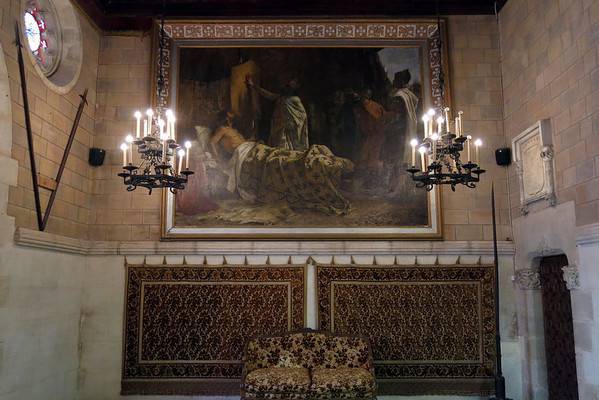
And here it is - this historical picture!
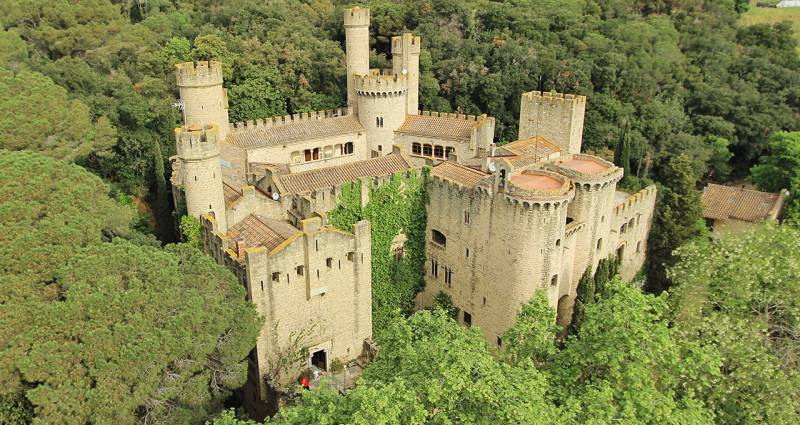
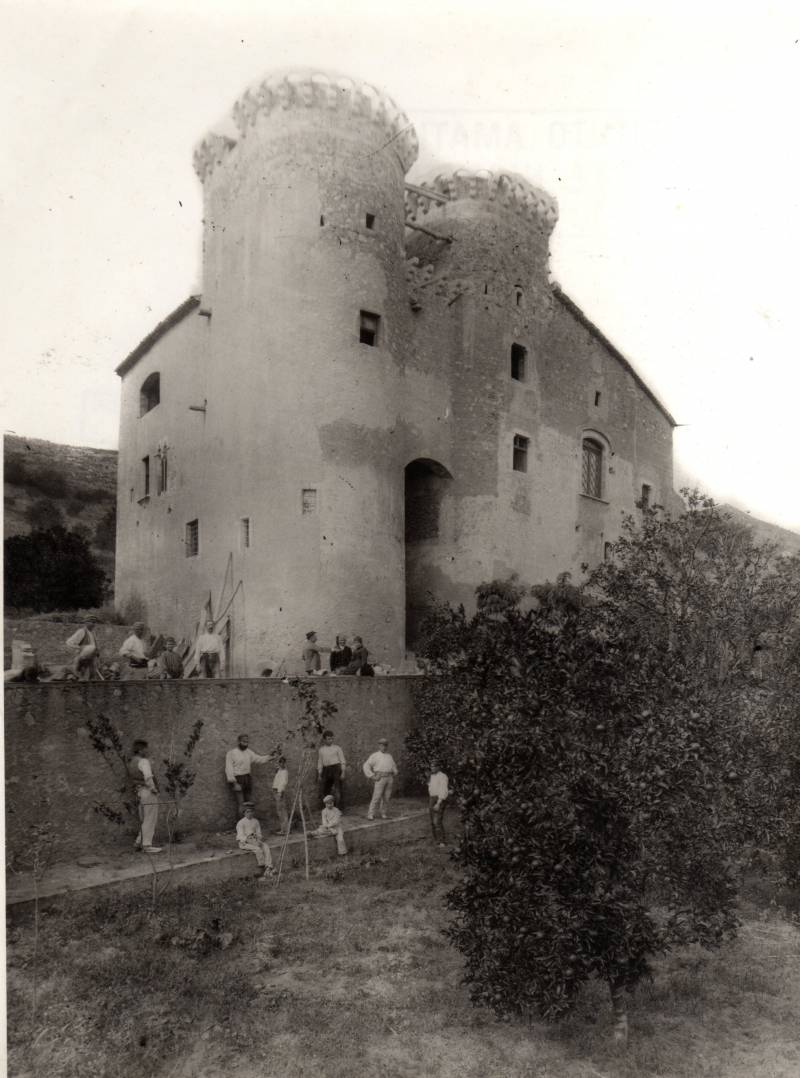
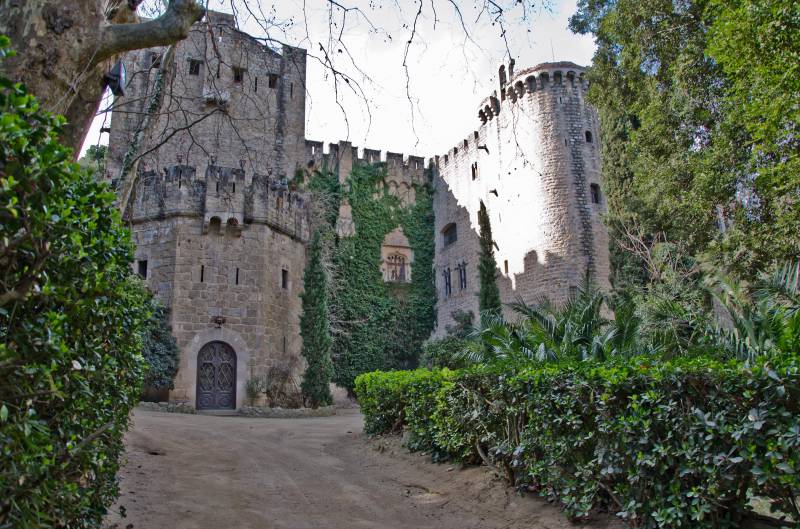
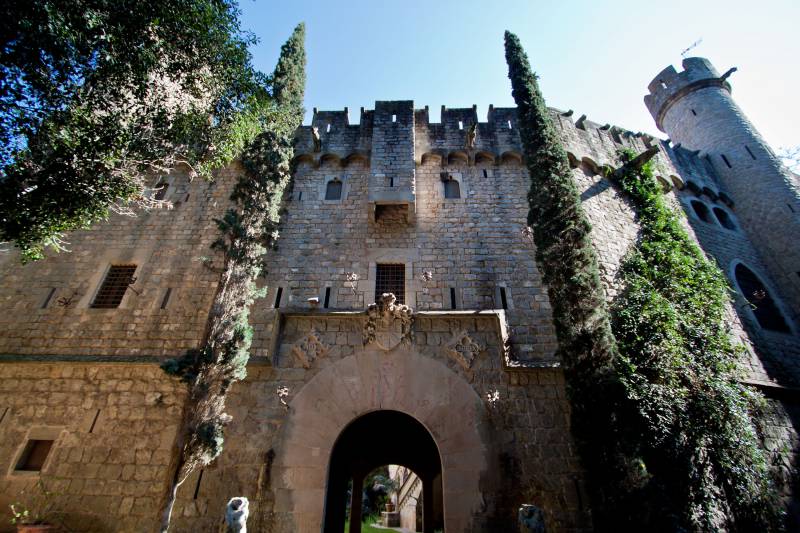
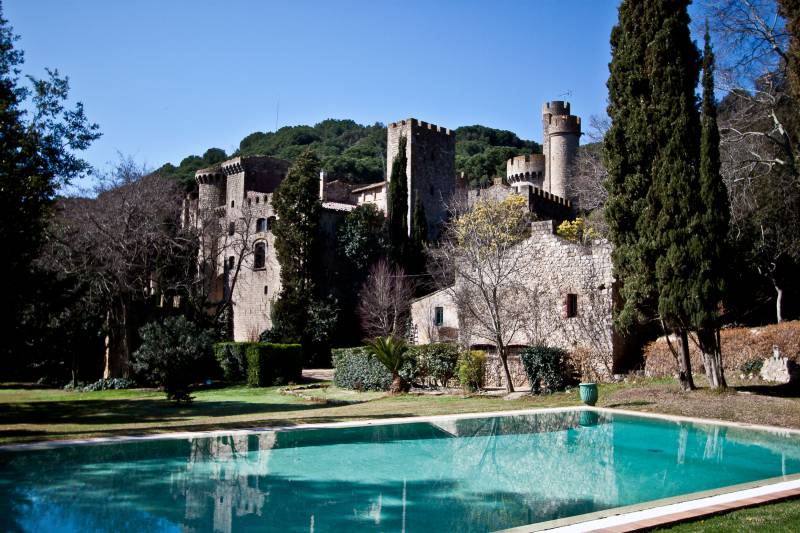
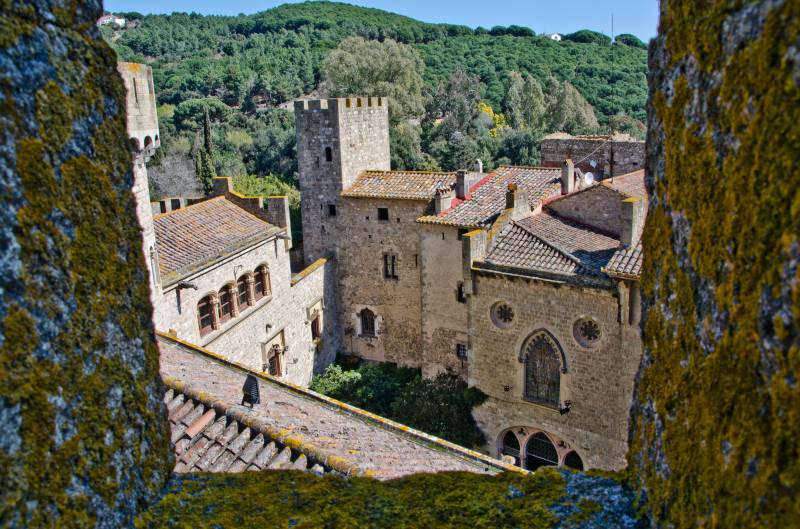
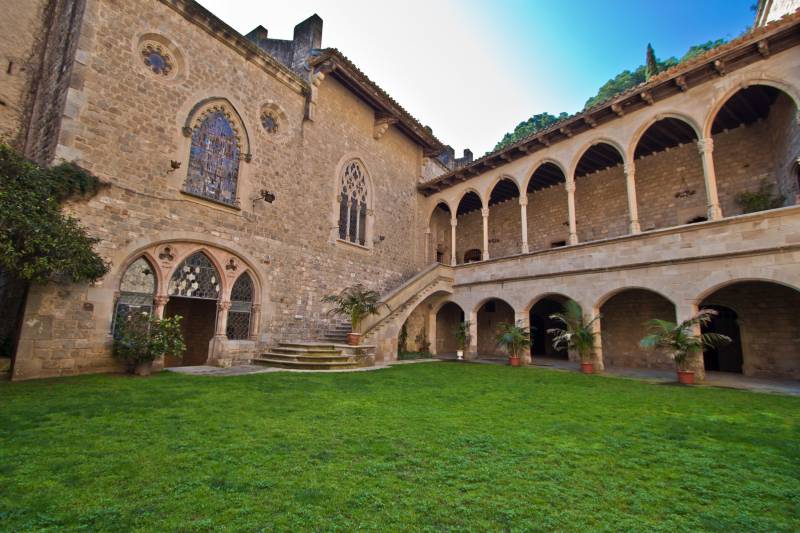
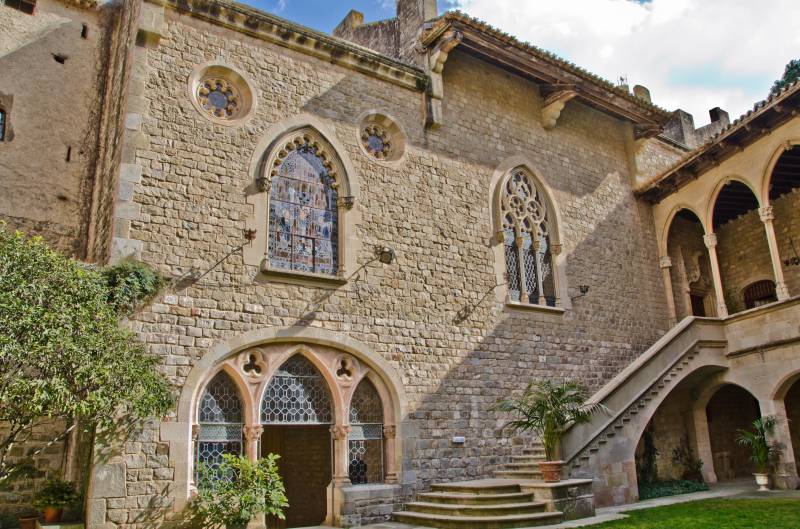
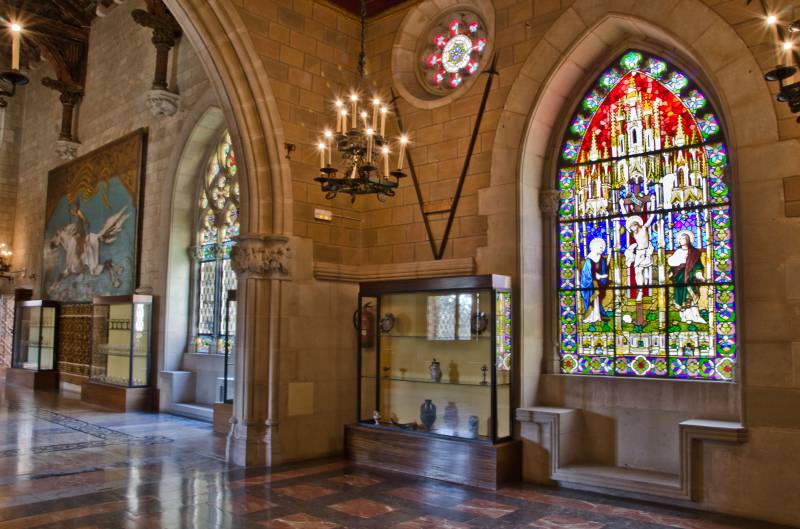
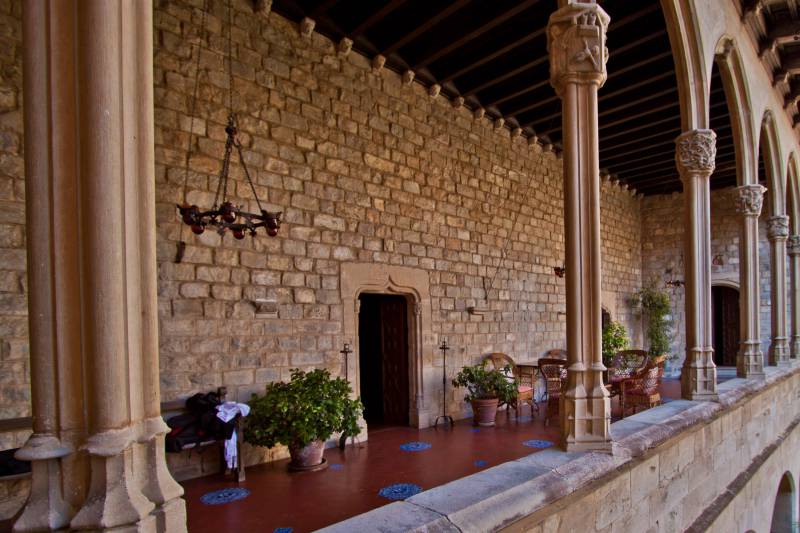
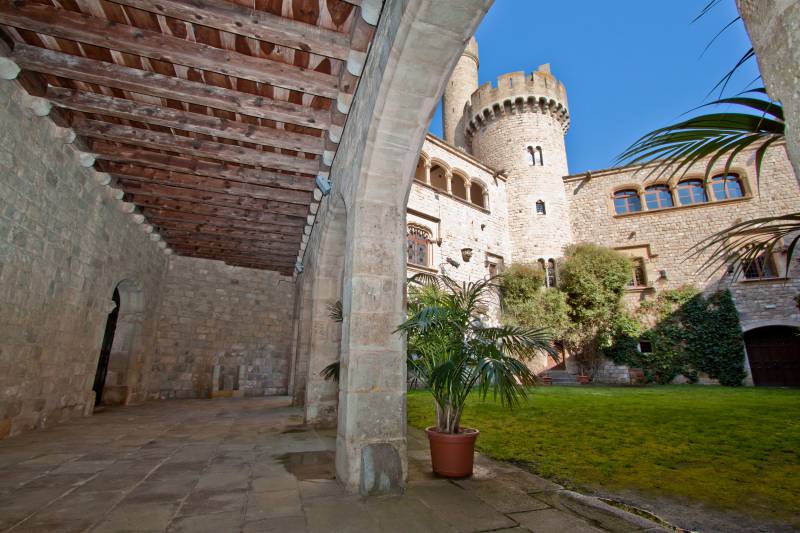
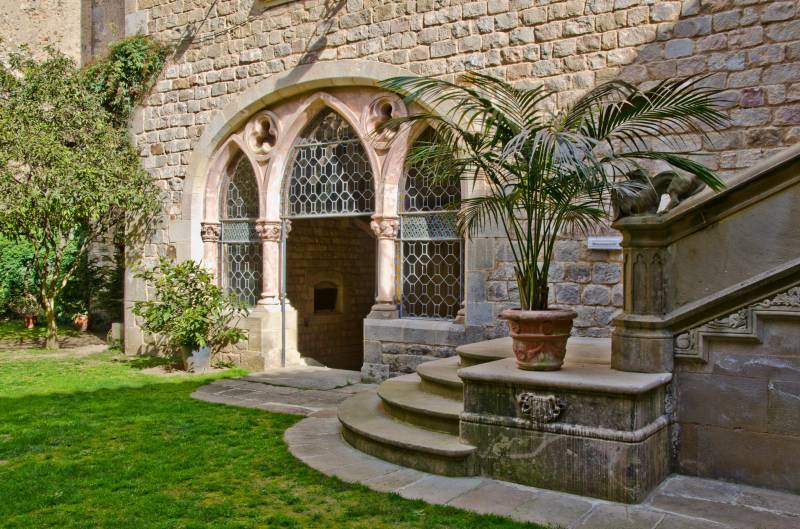
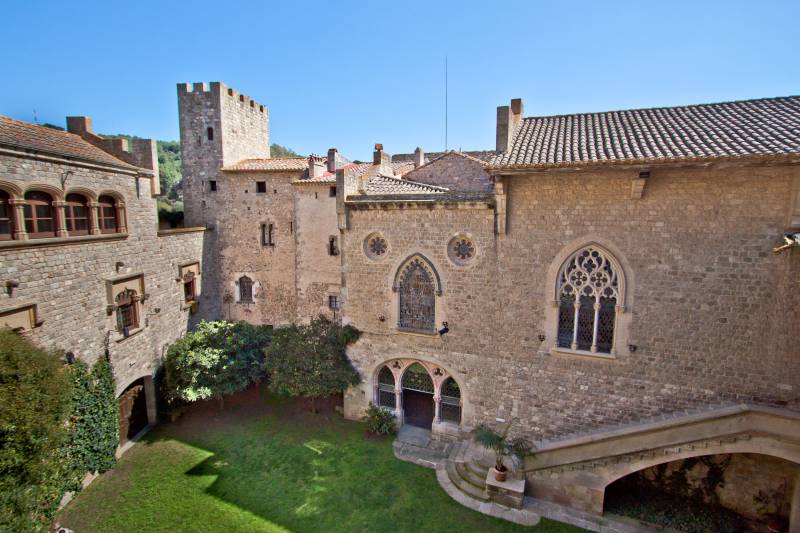
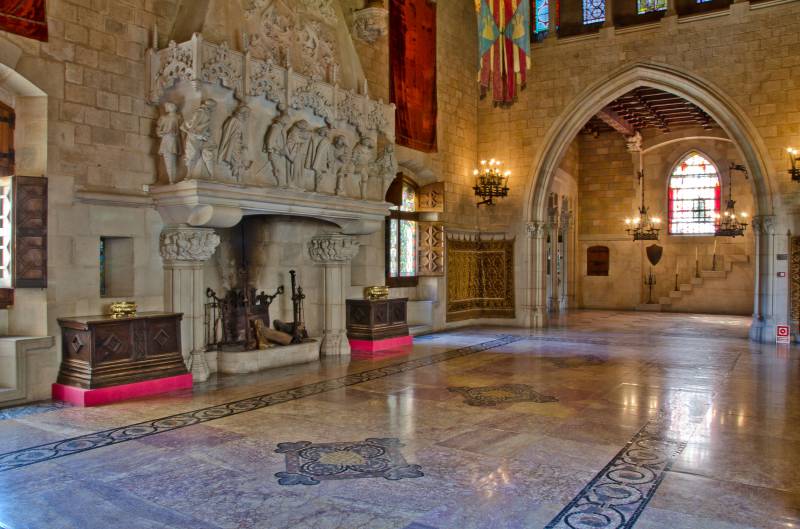

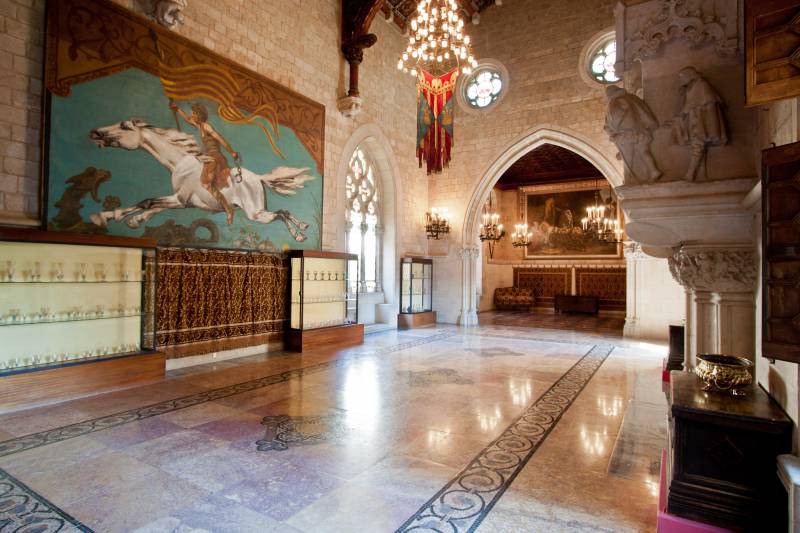
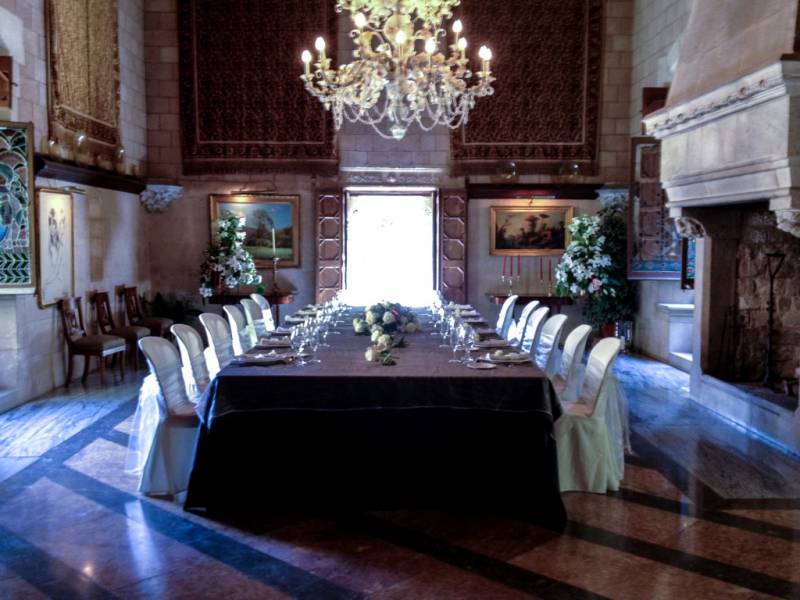
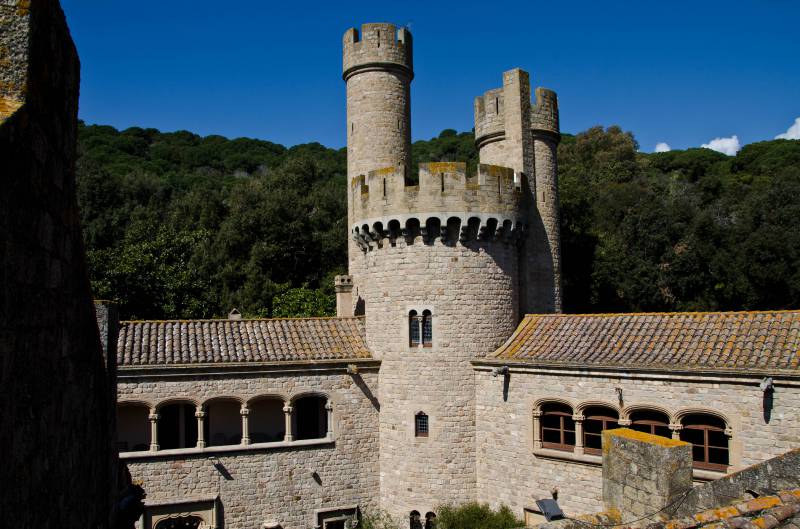
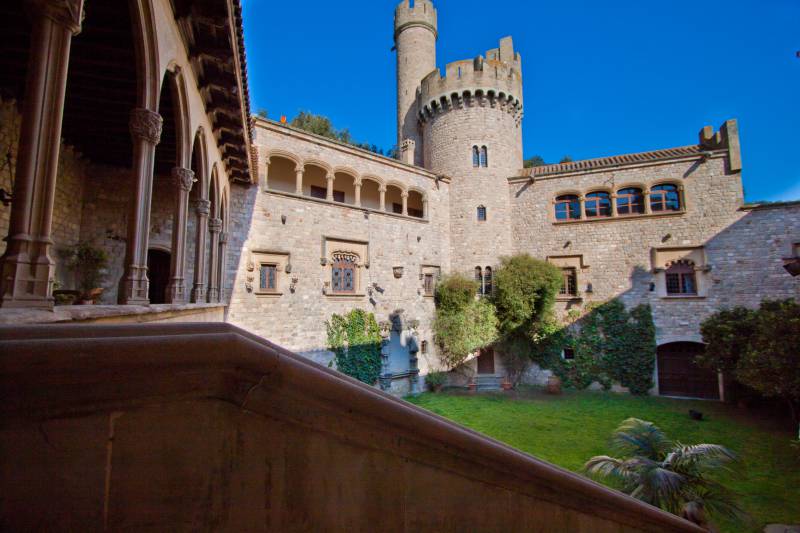
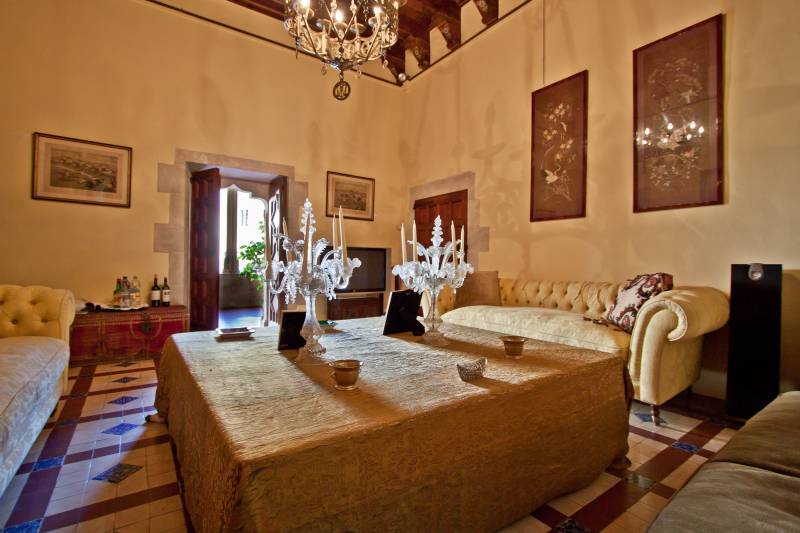
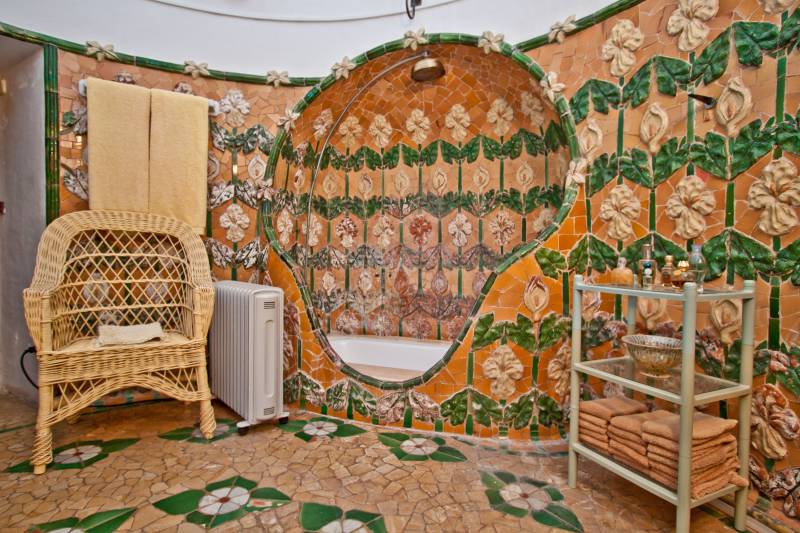
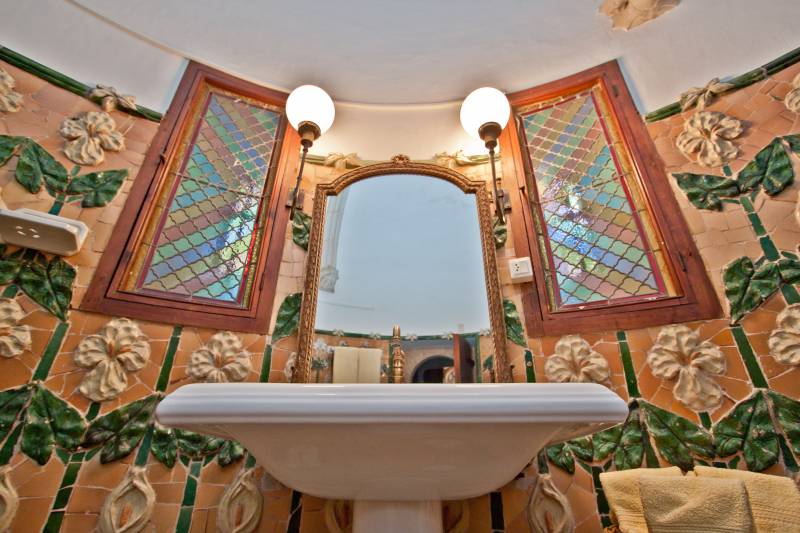
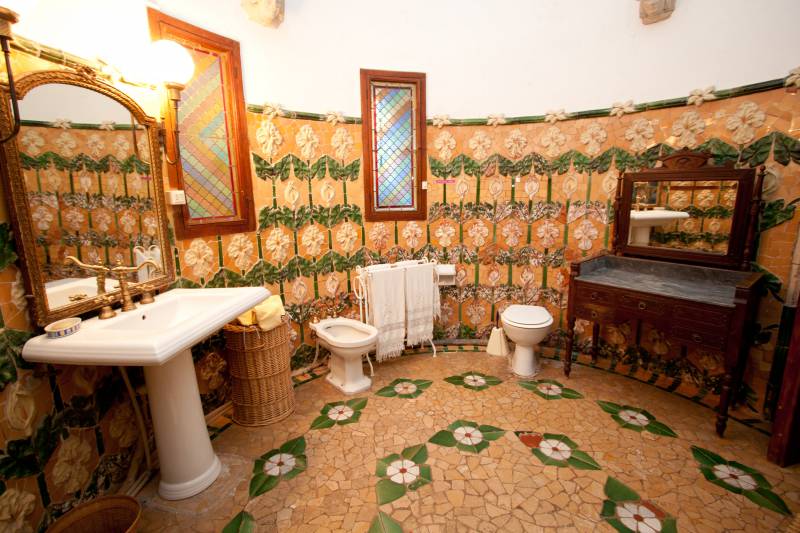
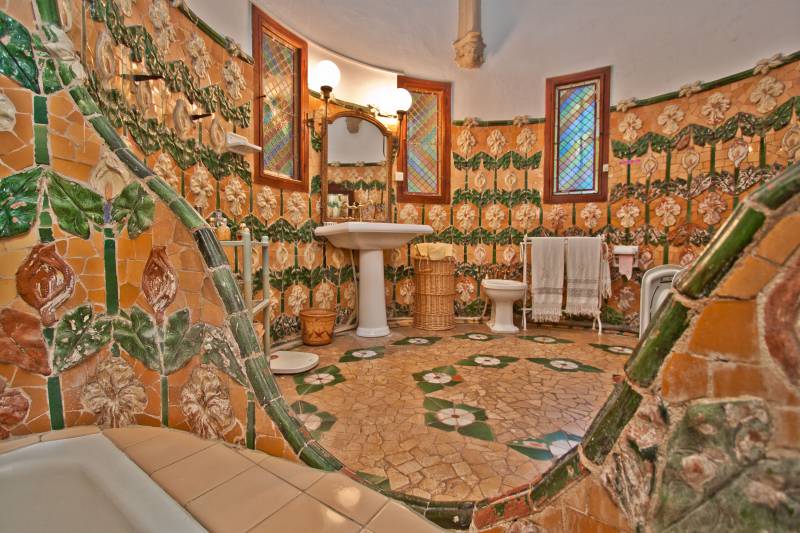

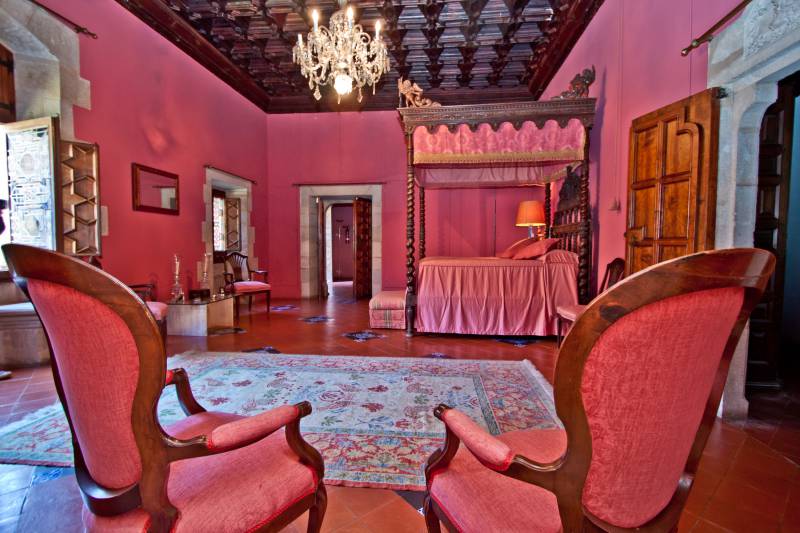
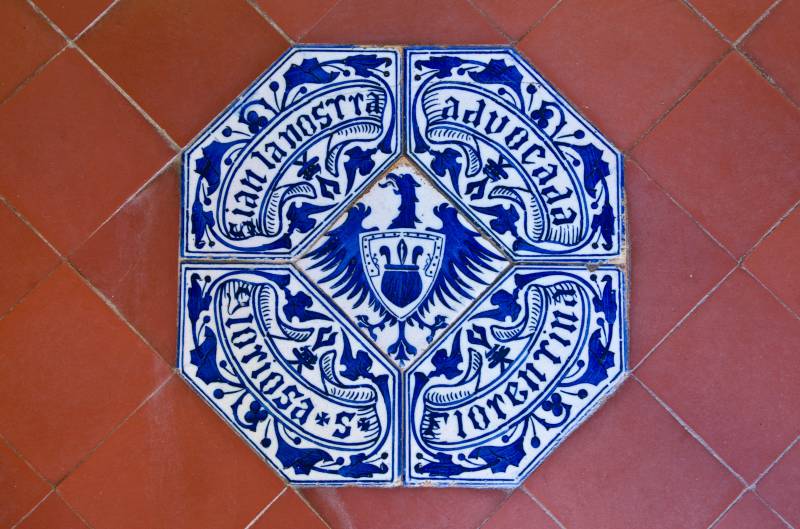
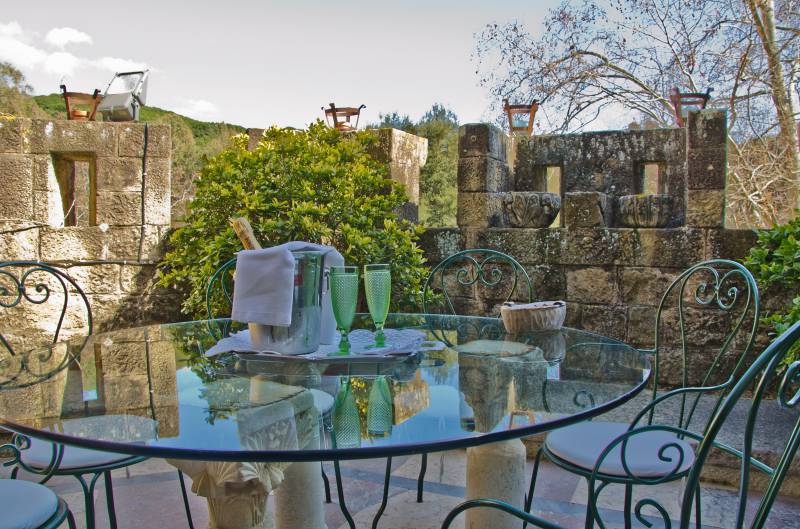
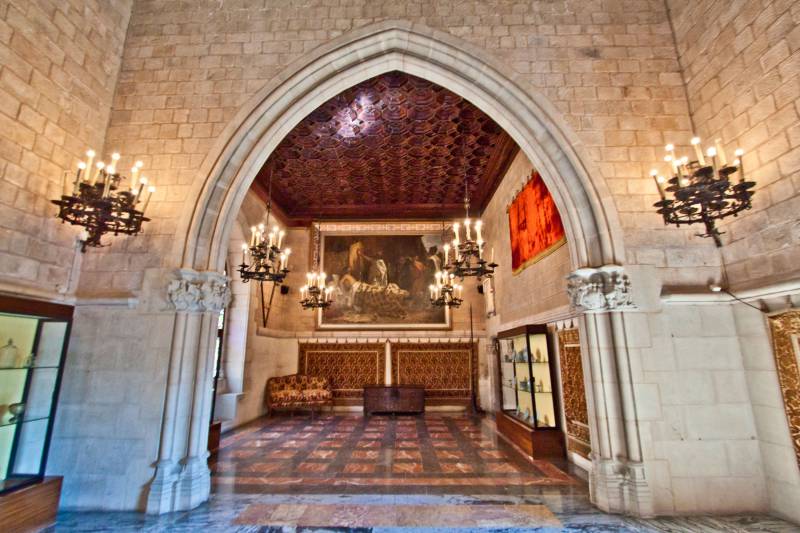
Information